| Weight | 1 lbs |
|---|---|
| Dimensions | 9 × 5 × 2 in |
| host | mouse |
| isotype | IgG1 |
| clonality | monoclonal |
| concentration | concentrate, predilute |
| applications | IHC |
| reactivity | human |
| available size | 0.1 mL, 0.5 mL, 1 mL concentrated, 7 mL prediluted |
mouse anti-Glypican 3 monoclonal antibody (1G12) 6201
Price range: $160.00 through $528.00
Antibody summary
- Mouse monoclonal to Glypican 3
- Suitable for: Immunohistochemistry (formalin-fixed, paraffin-embedded tissues)
- Reacts with: Human
- Isotype:IgG1
- Control: Hepatocellular carcinoma
- Visualization: Cytoplasmic and membranous
- 0.1, 0.5, 1.0 mL concentrated, 7 mL prediluted
mouse anti-Glypican 3 monoclonal antibody 1G12 6201
| target relevance |
|---|
| Protein names Glypican-3 (GTR2-2) (Intestinal protein OCI-5) (MXR7) [Cleaved into: Glypican-3 alpha subunit; Glypican-3 beta subunit] |
| Gene names GPC3,GPC3 OCI5 |
| Protein family Glypican family |
| Mass 65563Da |
| Function FUNCTION: Cell surface proteoglycan (PubMed:14610063). Negatively regulates the hedgehog signaling pathway when attached via the GPI-anchor to the cell surface by competing with the hedgehog receptor PTC1 for binding to hedgehog proteins (By similarity). Binding to the hedgehog protein SHH triggers internalization of the complex by endocytosis and its subsequent lysosomal degradation (By similarity). Positively regulates the canonical Wnt signaling pathway by binding to the Wnt receptor Frizzled and stimulating the binding of the Frizzled receptor to Wnt ligands (PubMed:16227623, PubMed:24496449). Positively regulates the non-canonical Wnt signaling pathway (By similarity). Binds to CD81 which decreases the availability of free CD81 for binding to the transcriptional repressor HHEX, resulting in nuclear translocation of HHEX and transcriptional repression (By similarity). Inhibits the dipeptidyl peptidase activity of DPP4 (PubMed:17549790). Plays a role in limb patterning and skeletal development by controlling the cellular response to BMP4 (By similarity). Modulates the effects of growth factors BMP2, BMP7 and FGF7 on renal branching morphogenesis (By similarity). Required for coronary vascular development (By similarity). Plays a role in regulating cell movements during gastrulation (By similarity). {ECO:0000250|UniProtKB:Q6V9Y8, ECO:0000250|UniProtKB:Q8CFZ4, ECO:0000269|PubMed:14610063, ECO:0000269|PubMed:16227623, ECO:0000269|PubMed:17549790, ECO:0000269|PubMed:24496449}. |
| Subellular location SUBCELLULAR LOCATION: Cell membrane {ECO:0000269|PubMed:14610063}; Lipid-anchor, GPI-anchor {ECO:0000250|UniProtKB:P13265}; Extracellular side {ECO:0000250|UniProtKB:P13265}. |
| Tissues TISSUE SPECIFICITY: Detected in placenta (at protein level) (PubMed:32337544). Highly expressed in lung, liver and kidney. {ECO:0000269|PubMed:32337544, ECO:0000269|PubMed:8589713}. |
| Structure SUBUNIT: Heterodimer; disulfide-linked (PubMed:14610063). Cleavage by a furin-like convertase results in production of alpha and beta chains which form a disulfide-linked heterodimer (PubMed:14610063). Interacts with DPP4 (PubMed:17549790). Interacts with FGF2 (By similarity). Interacts with WNT5A (PubMed:14610063). Also interacts with WNT3A and WNT7B (PubMed:16227623). Interacts with hedgehog protein SHH; the heparan sulfate chains are not required for the interaction (By similarity). Also interacts with hedgehog protein IHH (By similarity). Interacts with CD81 (By similarity). Interacts with Wnt receptors FZD4, FZD7 and FZD8; the heparan sulfate chains are required for the interaction (PubMed:24496449). {ECO:0000250|UniProtKB:P13265, ECO:0000250|UniProtKB:Q8CFZ4, ECO:0000269|PubMed:14610063, ECO:0000269|PubMed:16227623, ECO:0000269|PubMed:17549790, ECO:0000269|PubMed:24496449}. |
| Post-translational modification PTM: O-glycosylated; contains heparan sulfate and/or chondroitin sulfate. {ECO:0000269|PubMed:14610063, ECO:0000269|PubMed:32337544}.; PTM: Cleaved intracellularly by a furin-like convertase to generate 2 subunits, alpha and beta, which remain associated through disulfide bonds and are associated with the cell surface via the GPI-anchor (PubMed:14610063). This processing is essential for its role in inhibition of hedgehog signaling (PubMed:25653284). A second proteolytic event may result in cleavage of the protein on the cell surface, separating it from the GPI-anchor and leading to its shedding from the cell surface (PubMed:14610063). {ECO:0000269|PubMed:14610063, ECO:0000269|PubMed:25653284}. |
| Involvement in disease DISEASE: Simpson-Golabi-Behmel syndrome 1 (SGBS1) [MIM:312870]: A condition characterized by pre- and postnatal overgrowth (gigantism), facial dysmorphism and a variety of inconstant visceral and skeletal malformations. Characteristic dysmorphic features include macrocephaly with coarse, distinctive facies with a large protruding jaw, broad nasal bridge and cleft palate. Cardiac defects are frequent. {ECO:0000269|PubMed:10814714}. Note=The disease is caused by variants affecting the gene represented in this entry. |
| Target Relevance information above includes information from UniProt accession: P51654 |
| The UniProt Consortium |
Data
 |
| Human hepatocellular carcinoma stained with anti-GPC3 antibody using peroxidase-conjugate and DAB chromogen. Note membranous and granular cytoplasmic staining of tumor cells. |
Publications
| pmid | title | authors | citation |
|---|---|---|---|
| We haven't added any publications to our database yet. | |||
Protocols
| relevant to this product |
|---|
| IHC |
Documents
| # | SDS | Certificate | |
|---|---|---|---|
| Please enter your product and batch number here to retrieve product datasheet, SDS, and QC information. | |||
Only logged in customers who have purchased this product may leave a review.


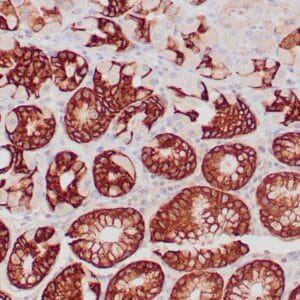
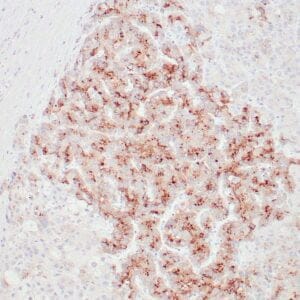
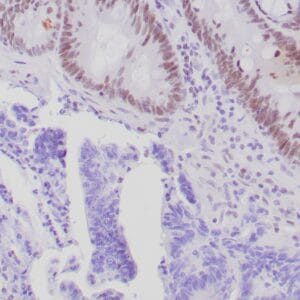


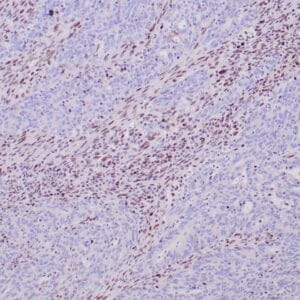
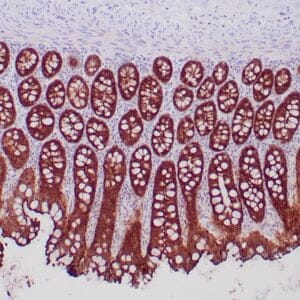
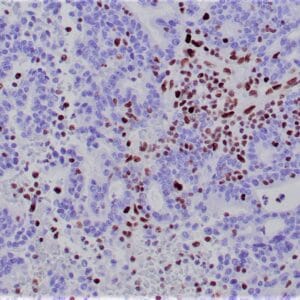
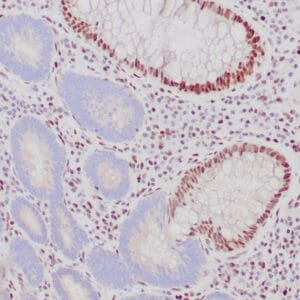
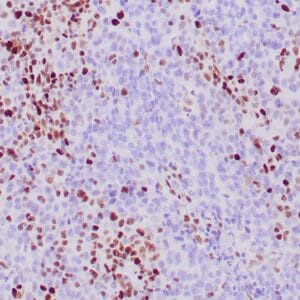

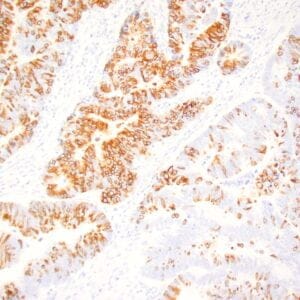

Reviews
There are no reviews yet.